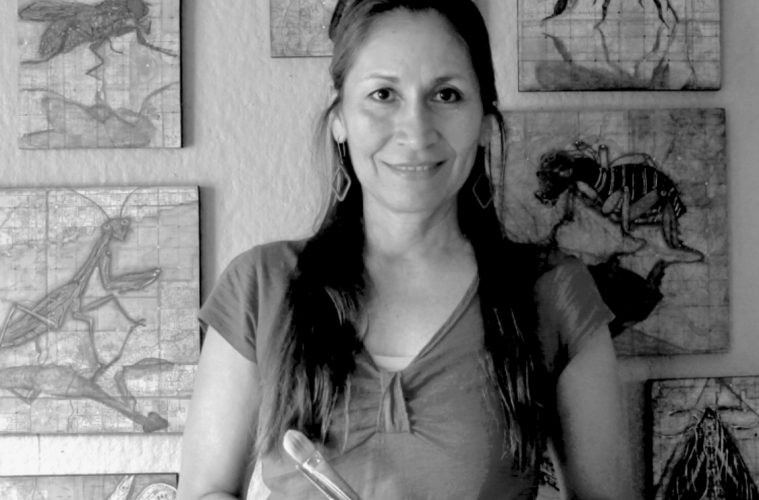Monica Aissa Martinez is doing two back-to-back museum exhibitions this year. Both are solo shows, both titled “Nothing Is Stasis.” The first is currently installed at the MCA (Mesa Contemporary Arts) Museum, running through August 7th, and the second will open at the Tucson Museum of Art on September 1 (through April 23, 2023). These exhibits bring to fruition the work of Martinez, whose career spans nearly 40 years.
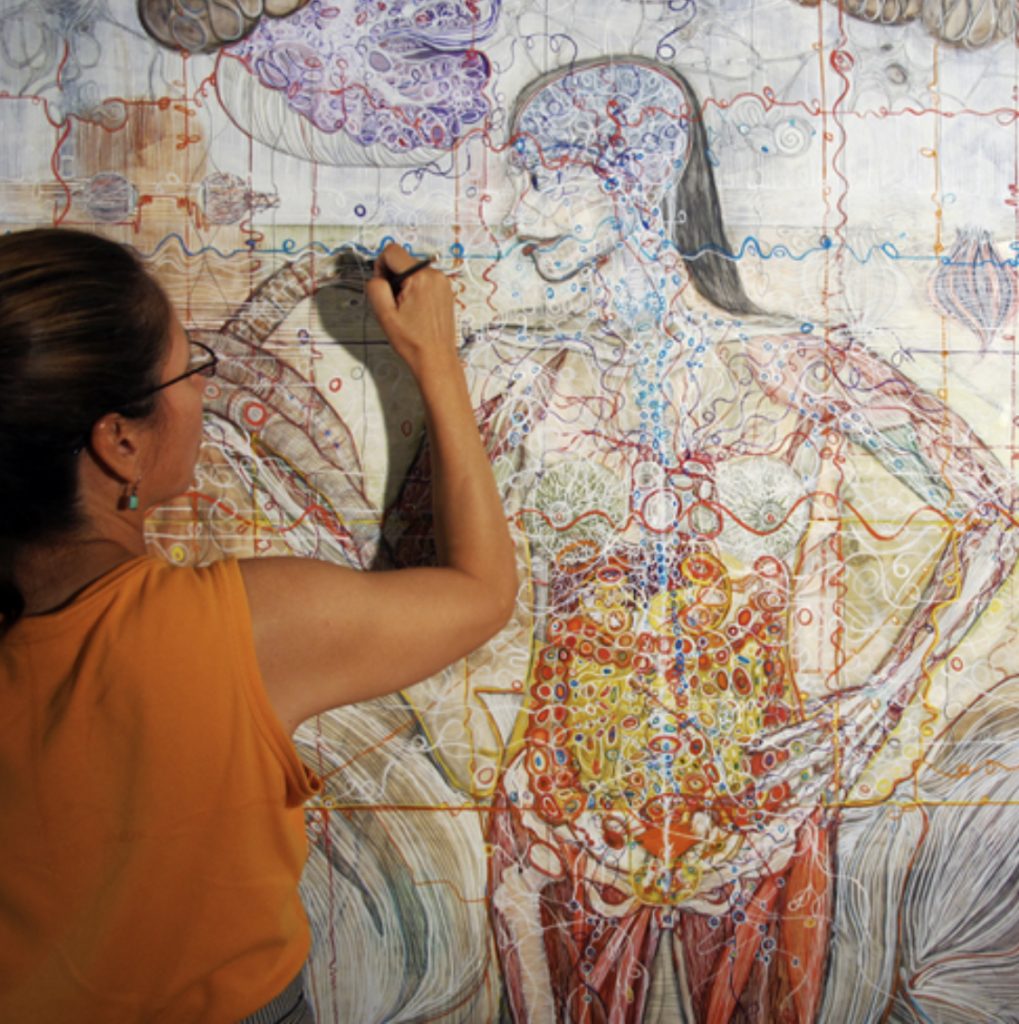
The current MCA exhibition features over 30 paintings that explore the anatomical, physiological and energetic aspects of the body. Martinez approaches her work much like a scientist or doctor; studying anatomy, physiology, and various bodily functions. Her work also explores the pathology of diseases on a cellular level. This seems especially relevant, since this work was created amidst a worldwide pandemic.
Martinez has been working with this subject matter for over a decade, and her art has been collected and exhibited vastly across the United States. She was one of the artists chosen for in the inaugural exhibition at the highly lauded Crystal Bridges Museum of American Art, and her work has been added to the museum’s permanent collection.
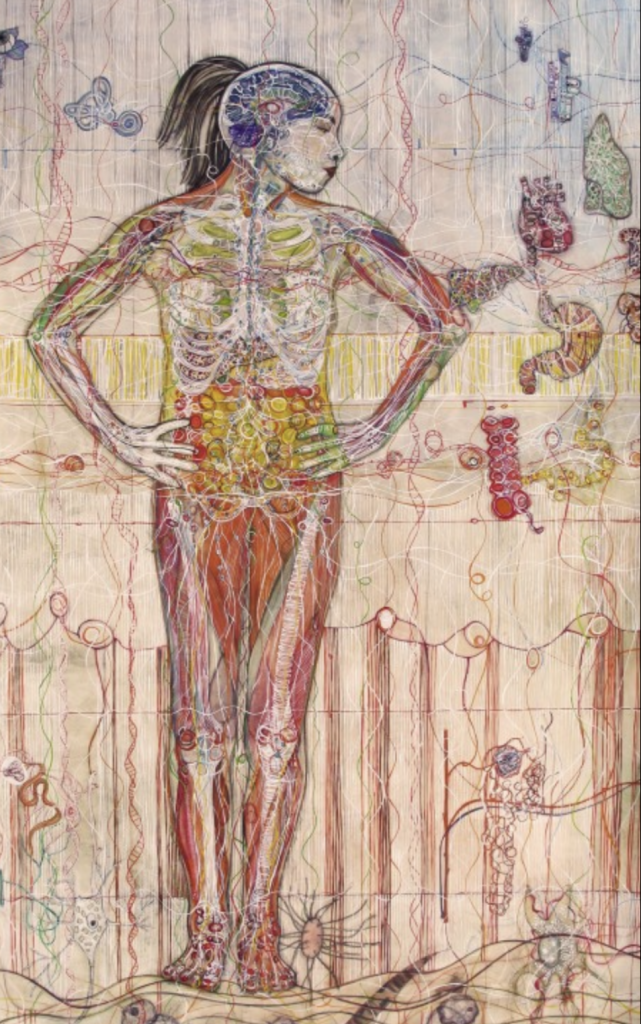
Martinez’ unique approach to painting consists of working with raw pigment and casein – making her own paint – while utilizing paper or a mylar substrate as a surface. Some of the works in this exhibition resemble enlarged petri dishes – circular paintings on mylar, pressed between two acrylic discs.
When I visited Martinez in her studio earlier this year, the luminosity of natural backlighting pierced through these pieces in front of the window. Her studio walls were filled with large scale paintings representing human anatomy, inspired by her own friends and family. One familiar subject is artist Carolyn Lavender, who like Martinez, teaches studio art at Phoenix College.
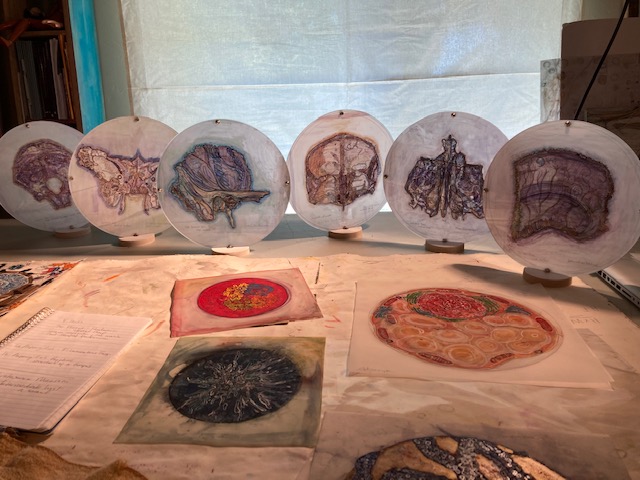
One particular painting of Lavender explores multiple layers of bone, muscle, and vascular system, along with quirky personal references to the subject, and subtle clues directing the viewer to ponder the human condition. Martinez’ non-traditional portraiture is a deeply personal reflection of the individual it represents.
This year’s exhibitions are dedicated to Martinez’ brother Chacho and father Roberto, both of whom she lost during the pandemic. She honors them with striking portraits welcoming visitors as they enter the North Gallery of MCA Museum. Within the exhibition there are also a portraits of her mother, other family members, and friends from her community.
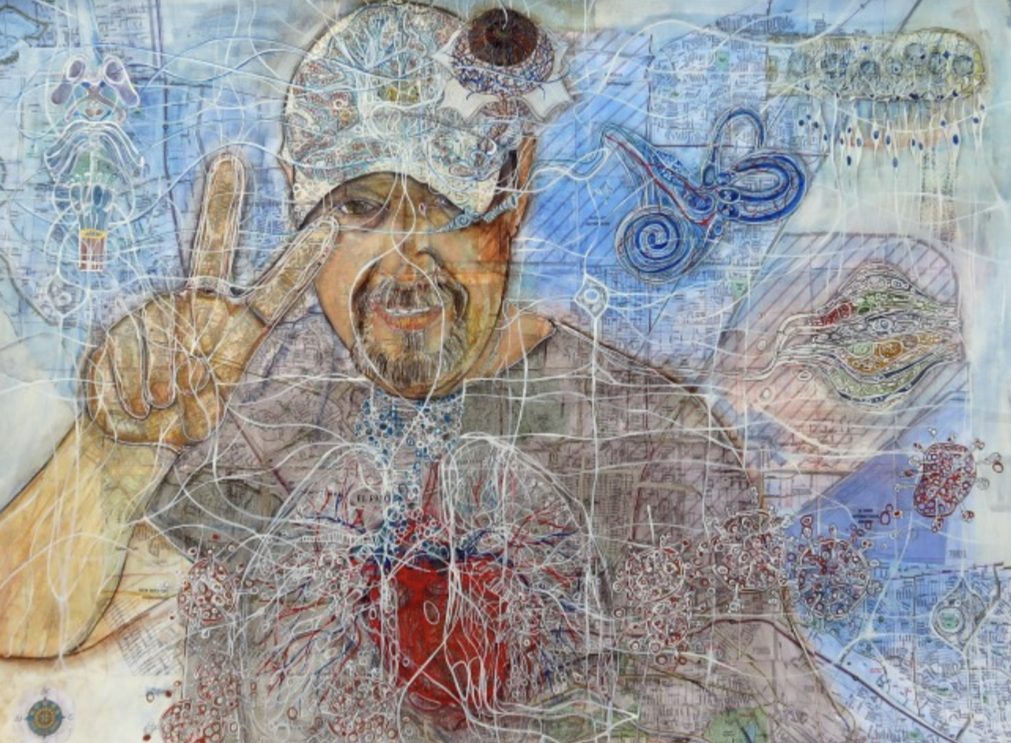
One painting depicts the artist in a handstand with her partner assisting the pose. Martinez has studied yoga for many years at Desert Song Yoga and Healing Arts in Phoenix, and her practice has allowed her to dive deeper into the energetics of the body. Her yoga studies have given her a deeper understanding of the anatomy and physiology, and influenced her artwork along the way. Martinez mentioned that her father was also interested in yoga and was the first person to introduce her to its benefits, leading to a lifelong exploration for her.
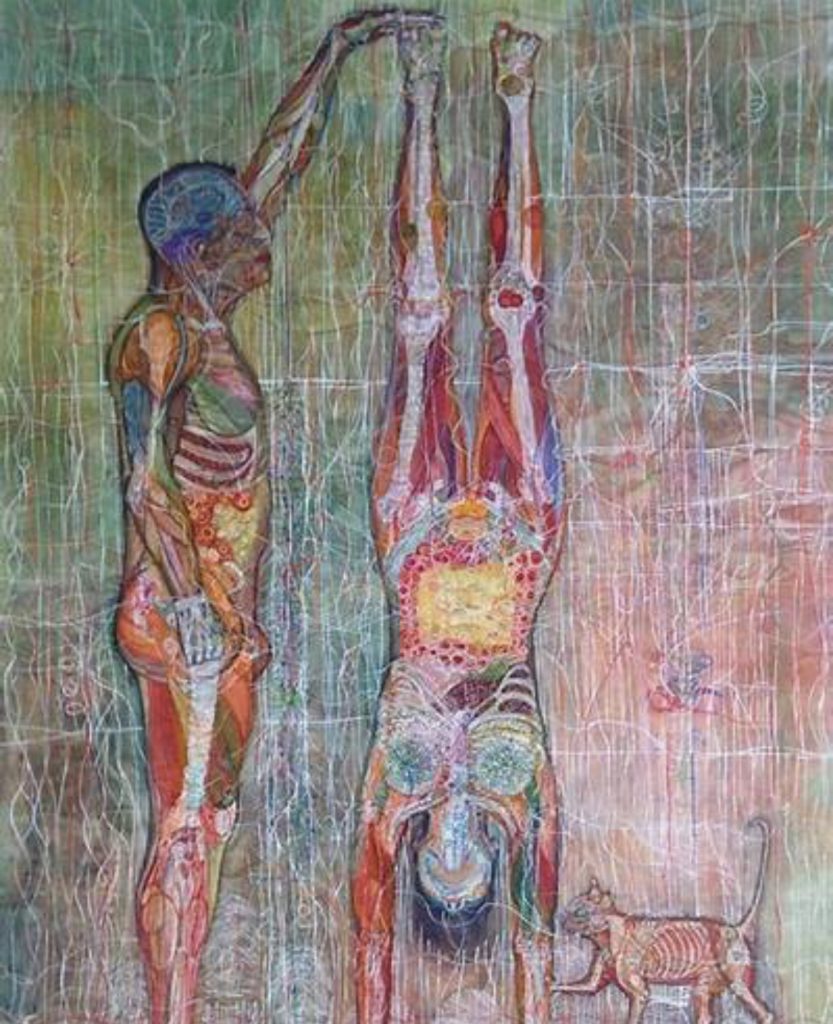
Martinez takes time to explore and research subjects in great depth, to try and learn about every aspect of form and function, and it is profound to witness the depth of each painting and to see the layers of energy moving through the anatomical forms.
Interestingly, in the main lobby of the museum there are also images of pathogens that Martinez has created

